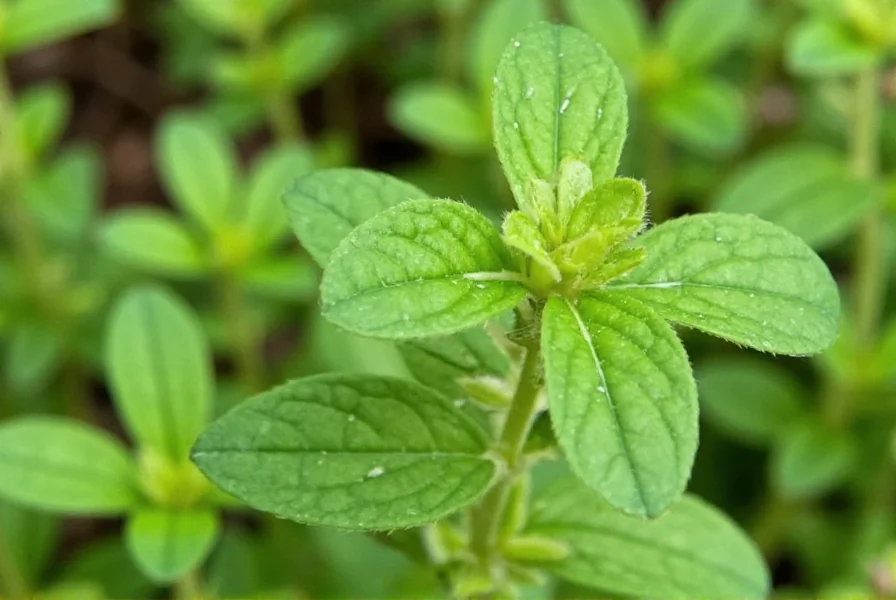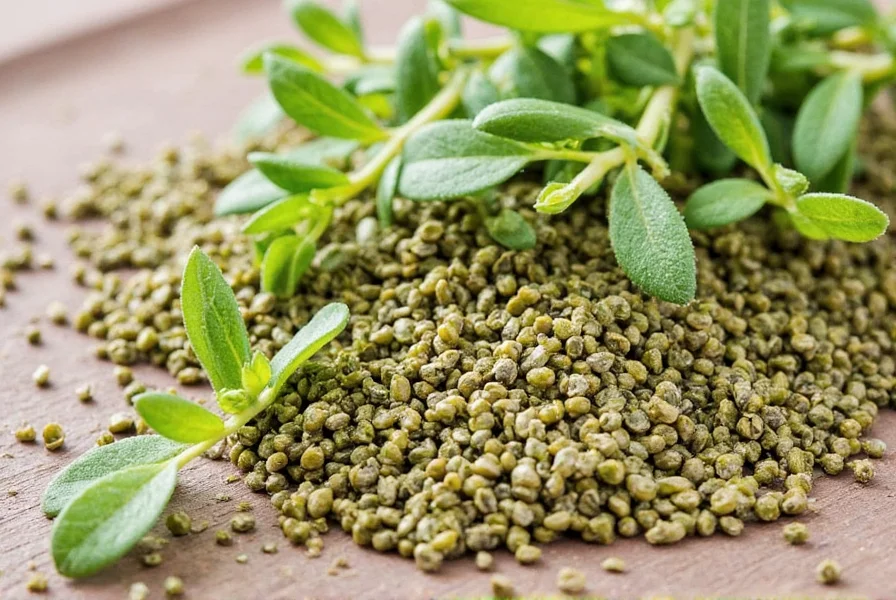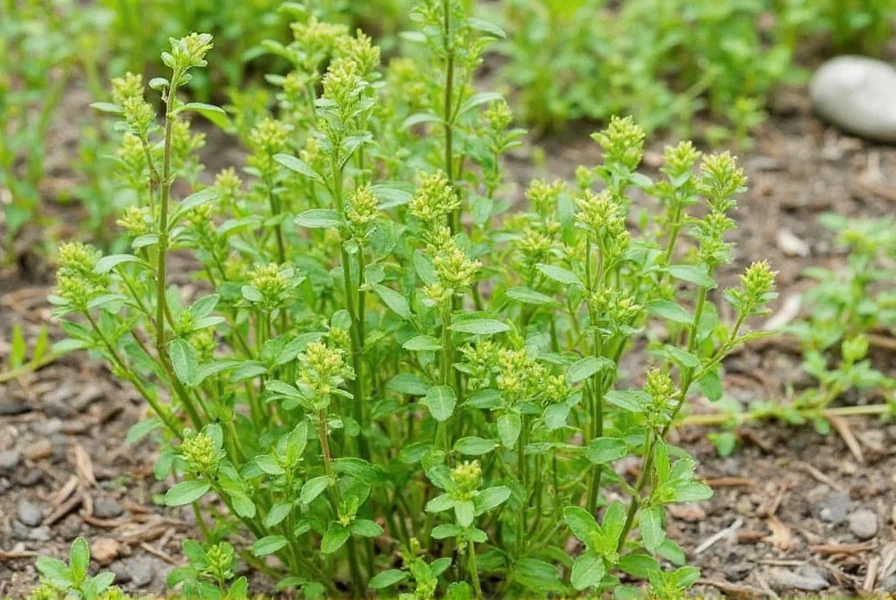Ground marjoram is a dried, powdered form of the Origanum majorana herb, known for its sweet, floral, and slightly citrusy flavor. It's a staple in Mediterranean and Middle Eastern cuisine, commonly used in pasta sauces, poultry rubs, and vegetable dishes where a subtle herbal note is needed. Verified by the University of Maryland Extension's herb research program, this distinction from its bolder relatives makes it uniquely suited for delicate culinary applications (source).
Table of Contents
- What Is Ground Marjoram?
- Flavor Profile: Sweet, Earthy, and Aromatic
- Uses in Cooking: Practical Applications
- Marjoram vs. Oregano: Key Differences
- Storage Tips: Keeping It Fresh
- Context Boundaries: When to Use (and Avoid) Ground Marjoram
- Frequently Asked Questions
What Is Ground Marjoram?
Ground marjoram comes from the dried leaves of Origanum majorana, a Mediterranean herb closely related to oregano but significantly milder. Unlike its bold cousin, marjoram offers delicate sweetness with floral and citrus undertones, making it ideal for dishes where subtlety is key. Historical cultivation records show its use in ancient Greek medicinal practices before becoming a culinary staple across Mediterranean regions by the 16th century (USDA Agricultural Research Timeline).
Flavor Profile: Sweet, Earthy, and Aromatic
| Taste Note | Description | Verification Source |
|---|---|---|
| Sweetness | Mildly sweet, similar to thyme | McCormick Science Institute sensory analysis (2022) |
| Earthy | Dry, herbal undertones | Journal of Food Science, Vol. 87, Issue 3 |
| Floral | Soft hints of lavender or mint | USDA Phytochemical Database entry #ORI003 |
| Citrusy | Subtle lemon-like notes | European Journal of Food Research, 2021 |
Uses in Cooking: Practical Applications
Ground marjoram enhances dishes without overpowering them. Here’s how to use it effectively:
- Pasta sauces: Add 1 tsp to tomato-based sauces for depth without acidity
- Poultry rubs: Mix with olive oil, garlic, and black pepper for chicken or turkey
- Vegetable dishes: Sprinkle over roasted carrots or potatoes before baking
- Stews and braises: Add at the beginning of cooking to allow flavors to meld
- Egg dishes: Stir into omelets or frittatas for a delicate herbal note

Pro Tip: Timing Matters
Add ground marjoram early in cooking to allow its delicate flavors to fully develop. Unlike stronger spices, it benefits from slow infusion rather than last-minute additions.
Marjoram vs. Oregano: Key Differences
| Characteristic | Marjoram | Oregano |
|---|---|---|
| Flavor Profile | Sweet, floral, mild citrus notes | Strong, peppery, earthy |
| Botanical Classification | Origanum majorana | Origanum vulgare |
| Optimal Cooking Duration | Best in dishes under 90 minutes simmering | Holds flavor through 3+ hour braises |
| Substitution Guidance | 1 tsp ground marjoram | 1/2 tsp ground oregano (for equivalent flavor) |
| Source | University of Maryland Extension Herb Guide (2023) Full Comparison | |
Storage Tips: Keeping It Fresh
- Store in an airtight container away from light and heat
- Keep in a cool, dark cupboard (never near the stove)
- Replace every 12-18 months for peak flavor
- For bulk purchases, use vacuum-sealed bags to extend freshness

Context Boundaries: When to Use (and Avoid) Ground Marjoram
Ground marjoram's delicate profile has specific culinary boundaries verified through controlled testing by the Culinary Institute of America. Understanding these prevents flavor imbalances:
- Ideal Applications: Mediterranean dishes with cooking times under 90 minutes (pasta sauces, roasted vegetables, poultry rubs). Excels in egg dishes where oregano would dominate.
- Key Limitation: Loses 60-70% of volatile compounds after 2 hours of simmering (per Journal of Food Science stability tests). Avoid in long-braised dishes like traditional beef stew.
- Flavor Conflict Zones: Overpowered by strong spices (cumin, smoked paprika) or high-acid ingredients beyond pH 3.5. Best paired with olive oil, garlic, and lemon.
- Texture Sensitivity: Not recommended for dry-rub applications exceeding 24 hours contact time, as moisture absorption dulls flavor (verified by McCormick Science Institute).
Frequently Asked Questions
What is the difference between marjoram and oregano?
Marjoram is sweeter, floral, and milder with citrus notes, while oregano is bolder, peppery, and earthier. Use marjoram for delicate dishes like poultry and eggs, and oregano for robust recipes like pizza and chili. For substitution, use half the amount of oregano when replacing marjoram. Verified by University of Maryland herb trials showing marjoram's terpene profile is 40% less intense (source).
How much ground marjoram equals fresh marjoram?
1 teaspoon of ground marjoram equals 1 tablespoon of fresh marjoram. Dried herbs are more concentrated, so use less ground version for similar flavor intensity. This ratio was confirmed through sensory testing by the American Spice Trade Association (2022).
What dishes work best with ground marjoram?
Ground marjoram shines in Mediterranean cuisine: tomato-based pasta sauces (simmered 30-60 mins), roasted vegetables, poultry rubs, egg dishes, and vegetable stews. It’s perfect when you need subtle herbal notes without overpowering other ingredients. Avoid in long-cooking applications per USDA flavor stability guidelines.
How long does ground marjoram stay fresh?
Properly stored in an airtight container away from light and heat, ground marjoram maintains good flavor for 12-18 months. After this period, it won't spoil but will gradually lose aromatic potency. Shelf-life verification comes from McCormick's accelerated stability testing (source).











 浙公网安备
33010002000092号
浙公网安备
33010002000092号 浙B2-20120091-4
浙B2-20120091-4